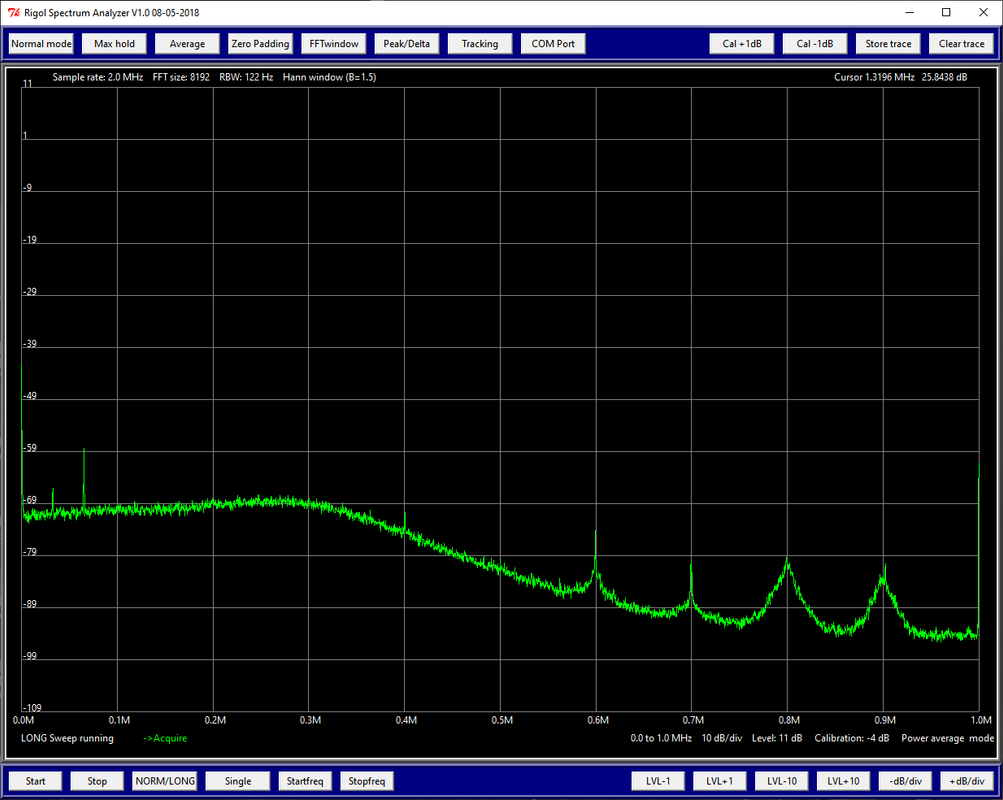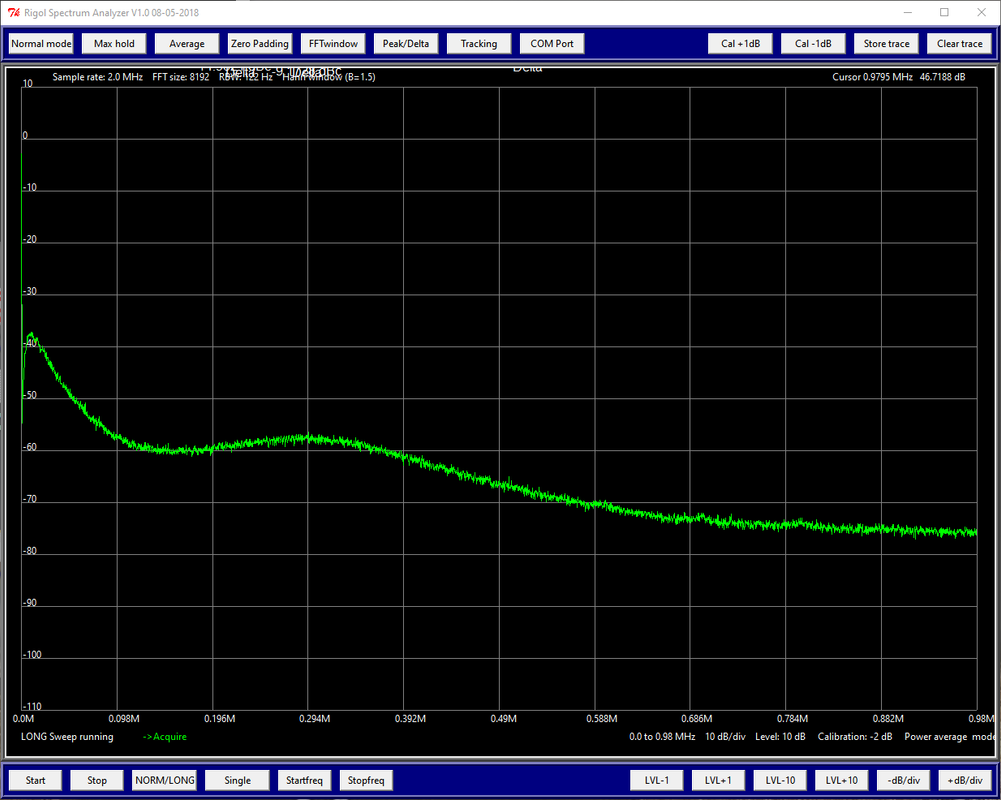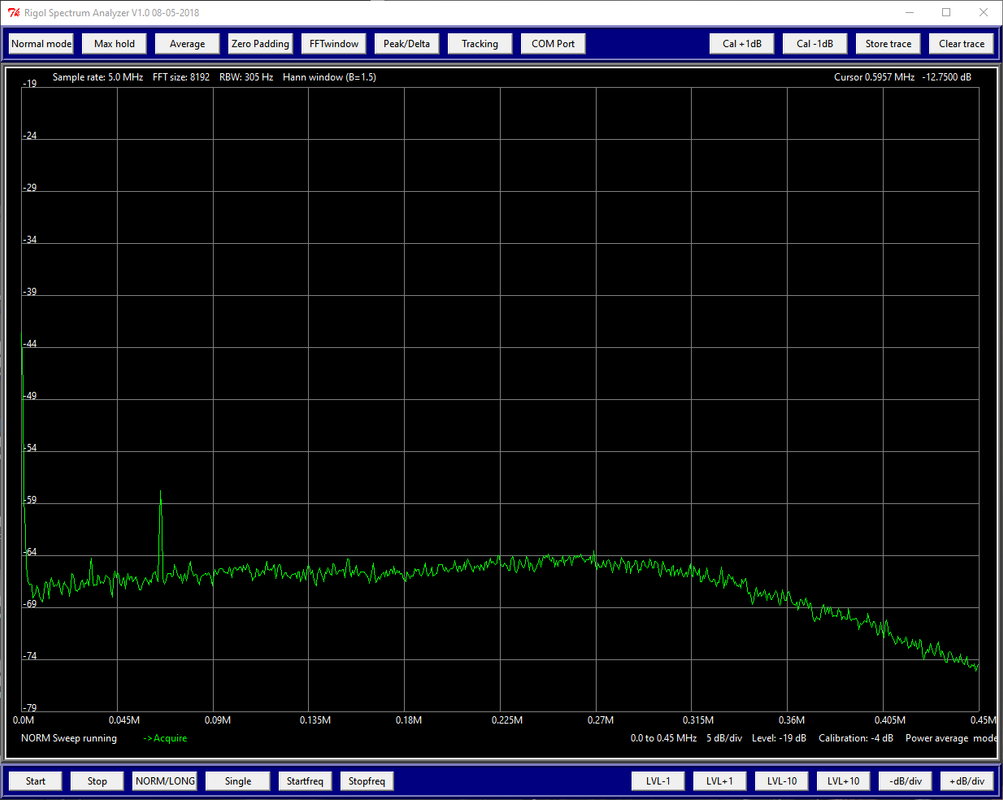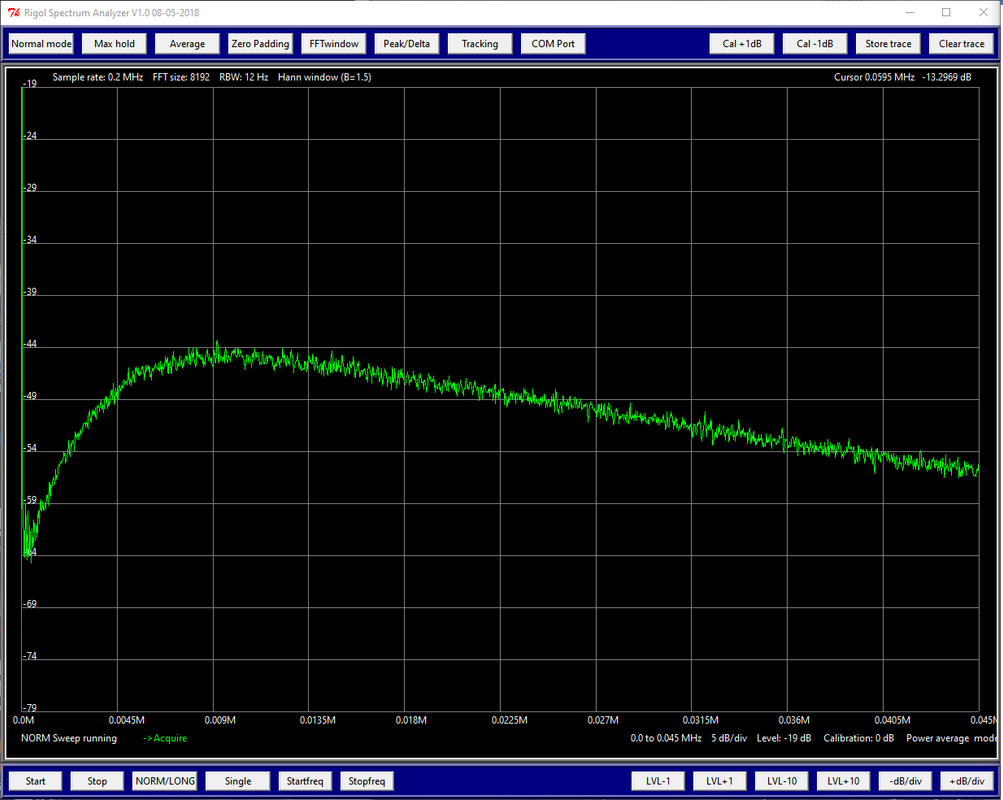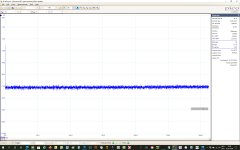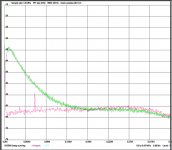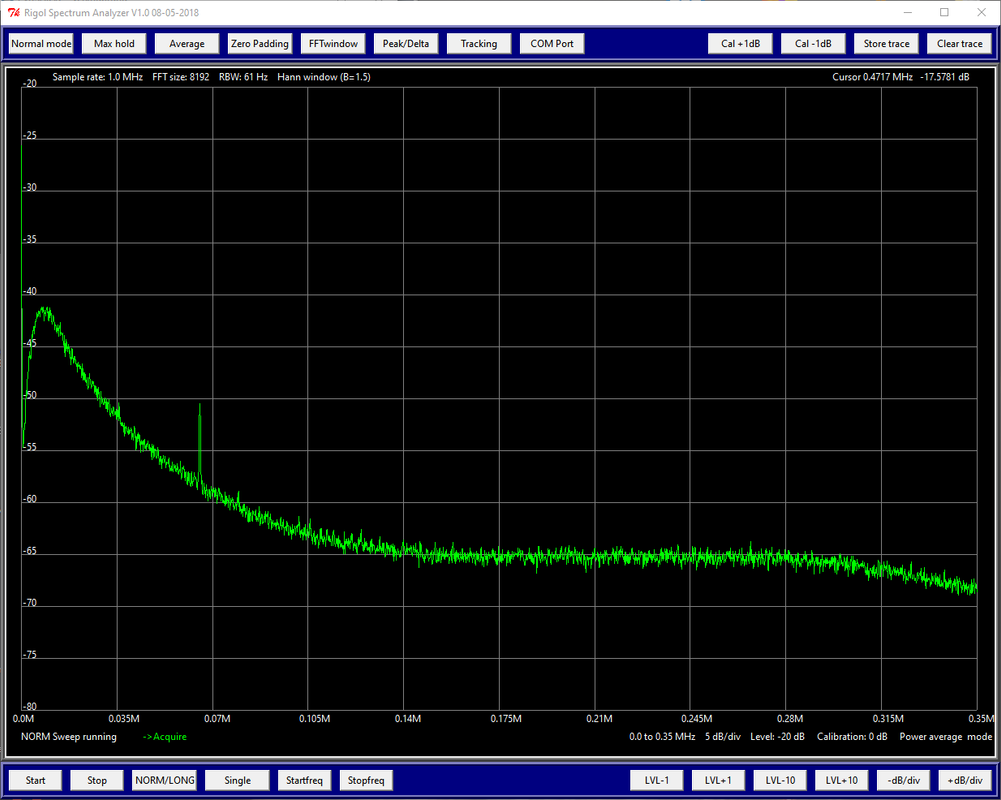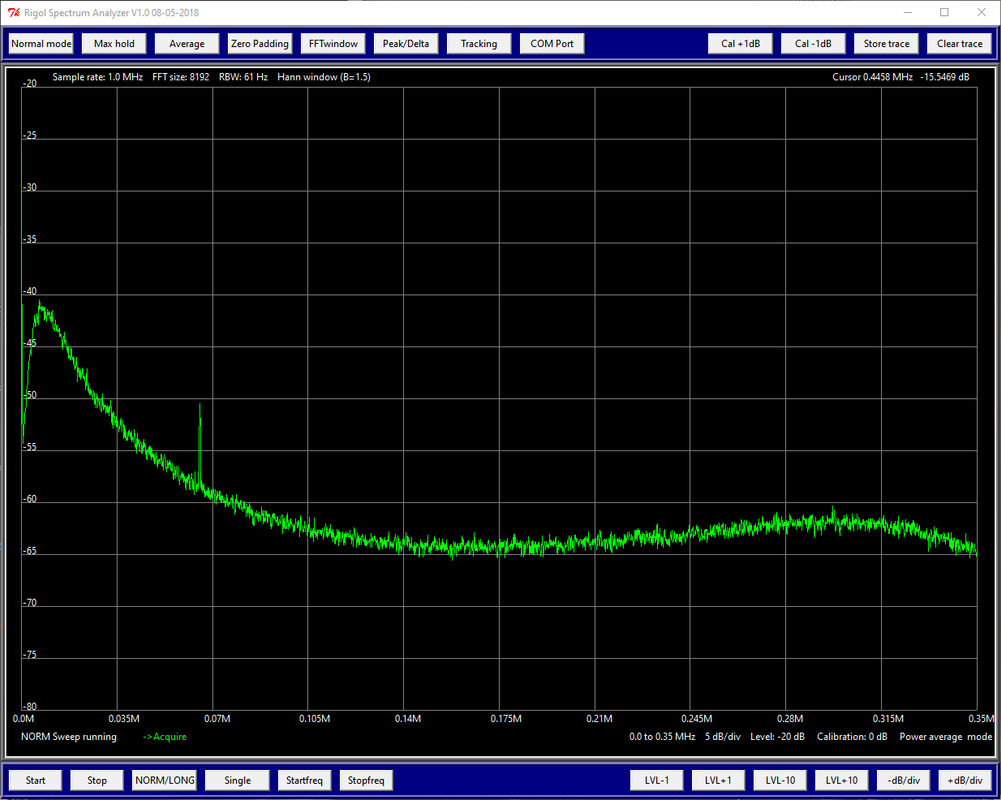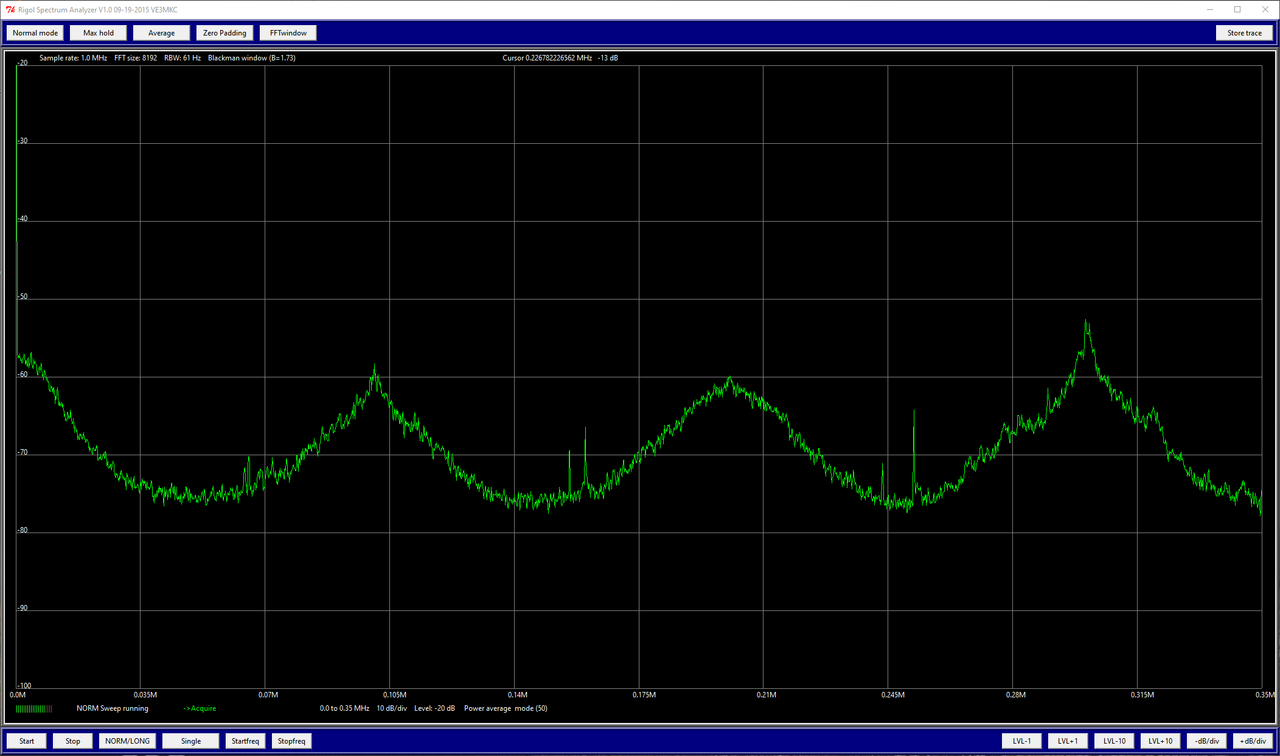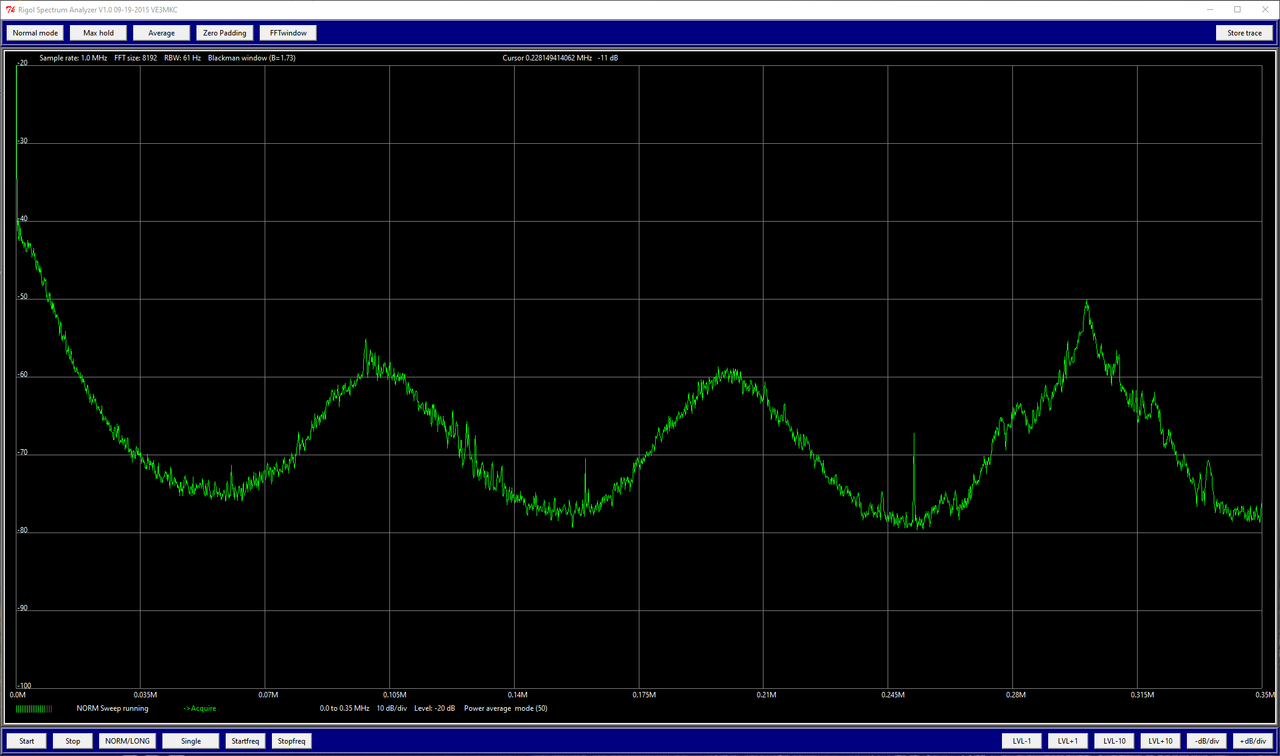Interesting warm-up effect with cold amps: the noise or noise gain doubled (according to ear) after 10 sec. Will try to verify if this is indeed output from noisy ML that's responsible. Could be a components that functions briefly and then breaks down?
Had this again for 15 sec this morning. It is indeed the 'perfect' ML whch causes this.
I remember experiencing this before, after 5min warm-up, left channel goes very low, and comes back after about 10min. Only on left channel. Cannot reproduce it, so never investigated.
BR
Measurements are coming. Keep in mind that dB scale is not calibrated, but relative. Working-to-working ML produces 25mVpp noise at LS Out, working-to-noisy ML 150-170mVpp.
100k 1nF was used, but because of the temporal averaging, makes no difference.
100k 1nF was used, but because of the temporal averaging, makes no difference.
Hi BakedAlaska,
Big, big improvement.
Two things are visible:
1) Amp doesn't have a BW of 122kHz as Stereophile reported but of 350Khz, but that lower frequency was caused by the input filter.
2) The silent one looks O.K. apart from a strange peak at 60Khz, but that is most likely caused by the switching power supply of your computer.
As a reference here the spectrum of my upgraded ML20.6 amp from 0-325Khz.
That's how the spectrum should look like, but as you see, yours comes close.
I'll study your images a bit further, and come back to you.
Hans
Big, big improvement.
Two things are visible:
1) Amp doesn't have a BW of 122kHz as Stereophile reported but of 350Khz, but that lower frequency was caused by the input filter.
2) The silent one looks O.K. apart from a strange peak at 60Khz, but that is most likely caused by the switching power supply of your computer.
As a reference here the spectrum of my upgraded ML20.6 amp from 0-325Khz.
That's how the spectrum should look like, but as you see, yours comes close.
I'll study your images a bit further, and come back to you.
Hans
Attachments
I have taken your 450Khz images, restricted them to 350Khz, being the actual BW and overlaid both images on top of each other.
As can be seen, as of 150kHz and upward, both are equal, so we only have to concentrate on the frequency below.
However, it is not an oscillation that's going on but a pure noise generation, so I think that this can only be caused by the regulated power supply (a zener?) , but before measuring the power supply, could you:
1) repeat the same noisy measurement with 450Khz, but now with P11 shorted to Gnd.
2) what about the other channel of the noisy amp, does it behave the same ?
Hans
As can be seen, as of 150kHz and upward, both are equal, so we only have to concentrate on the frequency below.
However, it is not an oscillation that's going on but a pure noise generation, so I think that this can only be caused by the regulated power supply (a zener?) , but before measuring the power supply, could you:
1) repeat the same noisy measurement with 450Khz, but now with P11 shorted to Gnd.
2) what about the other channel of the noisy amp, does it behave the same ?
Hans
Attachments
The 60kHz Peak stays there. Either PC or Scope switching PSU or some source in apartment above. On the Rigol I don't see this peak with the FFT, it's too limited, I need to get one of those pico scopes. The Rigol is only 8bit, the Pico at least 12.
Difference is also I'm using AC coupled all the time, but that should not make any difference here.
Heard the zeners mentioned before regarding ML 27.
And yes, the working ML does not look completely linear, compared to your 20.6 over the 350KHz BW.
Will get the other measurements, bear with me, I'm slow.
BR
Difference is also I'm using AC coupled all the time, but that should not make any difference here.
Heard the zeners mentioned before regarding ML 27.
And yes, the working ML does not look completely linear, compared to your 20.6 over the 350KHz BW.
Will get the other measurements, bear with me, I'm slow.
BR
Last edited:
O.K, so we can exclude the input buffer as the source of the problem.
Can you now measure the spectra of P1 and P4.
Hans
Can you now measure the spectra of P1 and P4.
Hans
Oops P1 and P4 was VReg, not a good to run this through amplifier.
Why is that not a good run, everything is AC coupled, but when you have second thoughts about that, leave the second amp out because noise will have a much higher amplitude.
Hans
- Home
- Amplifiers
- Solid State
- Mark Levinson No.27 amplifier,,,NEED HELP
